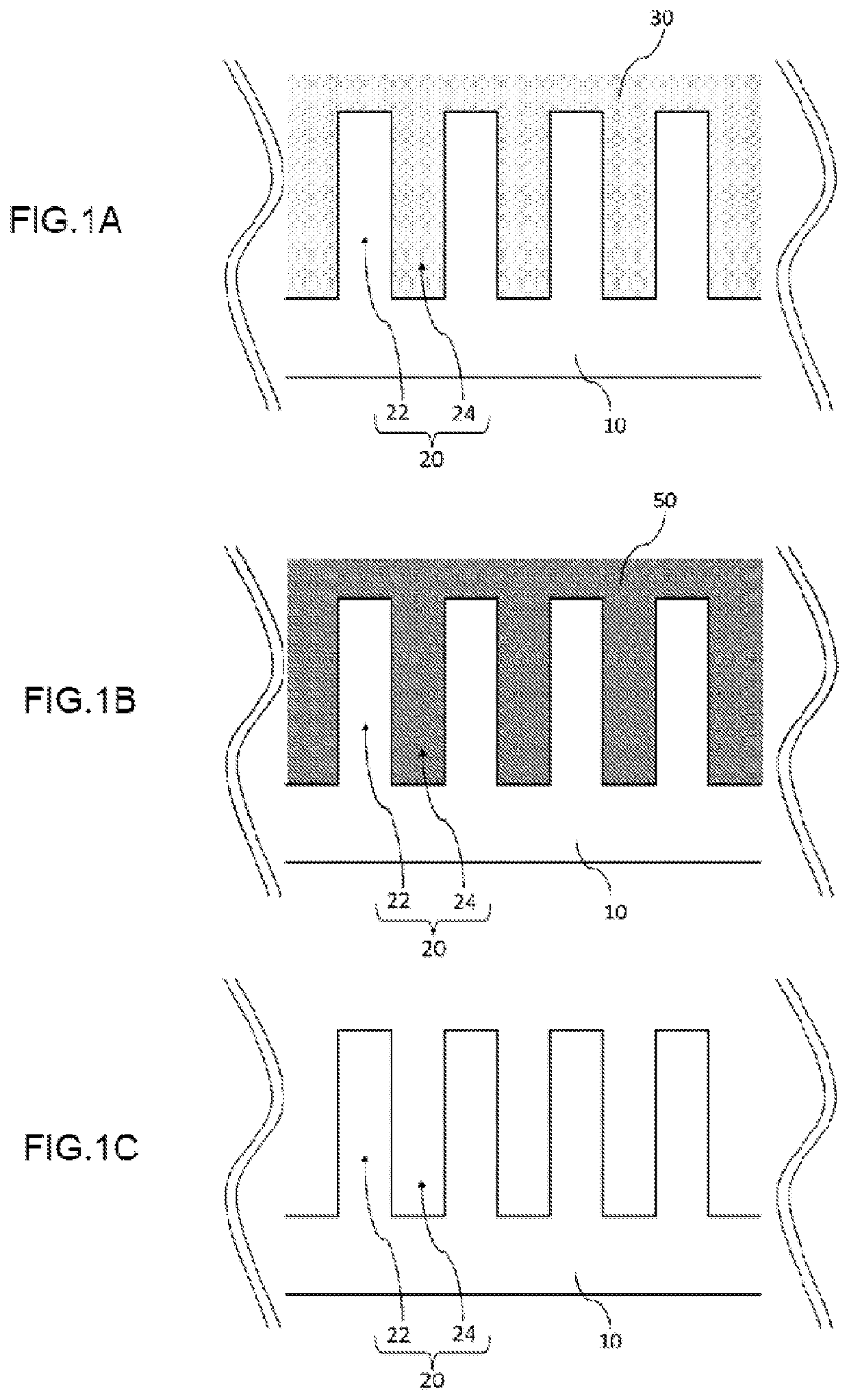Composition for drying uneven pattern and method for manufacturing substrate having uneven pattern on surface
- Summary
- Abstract
- Description
- Claims
- Application Information
AI Technical Summary
Benefits of technology
Problems solved by technology
Method used
Image
Examples
examples
(Example 1)
[0144]2.0 g of 1,1,2,2,3,3,4-heptafluorocyclopentane (HFCPA) was used as a sublimable substance. As a solvent, cis-1-chloro-3,3,3-trifluoropropene (1233Z) was used and dissolved and diluted to a total of 10.0 g. This solution was used as the composition for drying. As HFCPA, Zeolola H manufactured by ZEON Corporation was used.
[0145]A silicon substrate on which an uneven pattern having a plurality of approximately cylindrical convex portions having an aspect ratio of 22 and a pattern width of 19 nm at a pitch of 90 nm (the total distance between the width of the convex portions and the adjacent interval of the convex portions) in cross-sectional view was formed on the surface was cut out to dimensions of 1 cm×1.5 cm and used as an evaluation sample. The evaluation sample was dry cleaned by UV / O3 irradiation in advance and then used. The evaluation sample was placed in a spin coater and 2-propanol was supplied in a state in which the liquid (2-propanol) was held in the rece...
examples 2 to 15
[0147]HFCPA was used as the sublimable substance in the same manner as in Example 1, and the concentration and the like of the solvent and the sublimable substance were changed as shown in Table 1 below to carry out the evaluation sample preparation and evaluation in the same manner as in Example 1. The results are shown in Table 1 below.
examples 38 to 40
[0154]Compositions for drying were prepared by mixing a sublimating agent 1 and a sublimating agent 2 (sublimable substances) with a solvent 1 and / or a solvent 2 to the mixing ratios (% by mass) listed in Table 8. The evaluation sample preparation and evaluation were performed in the same manner as in Example 1.
[0155]In Tables 1 to 4, 7, and 8 below, the type of solvent used in each of the Examples and Comparative Examples, the difference between the boiling point or sublimation point of the sublimable substance and the boiling point of the solvent, the concentration of the sublimable substance in the composition for drying, the substitutability (amount of composition for drying required for step (I)), the coagulation time (time required for step (II)), the sublimation time (time required for step (III) or step (IIIb)), and the pattern collapsing ratio are listed.
[0156]The abbreviations, boiling points and vapor pressures of the solvents are listed in Table 5 below.
[0157]The abbrevi...
PUM
 Login to View More
Login to View More Abstract
Description
Claims
Application Information
 Login to View More
Login to View More - R&D
- Intellectual Property
- Life Sciences
- Materials
- Tech Scout
- Unparalleled Data Quality
- Higher Quality Content
- 60% Fewer Hallucinations
Browse by: Latest US Patents, China's latest patents, Technical Efficacy Thesaurus, Application Domain, Technology Topic, Popular Technical Reports.
© 2025 PatSnap. All rights reserved.Legal|Privacy policy|Modern Slavery Act Transparency Statement|Sitemap|About US| Contact US: help@patsnap.com

